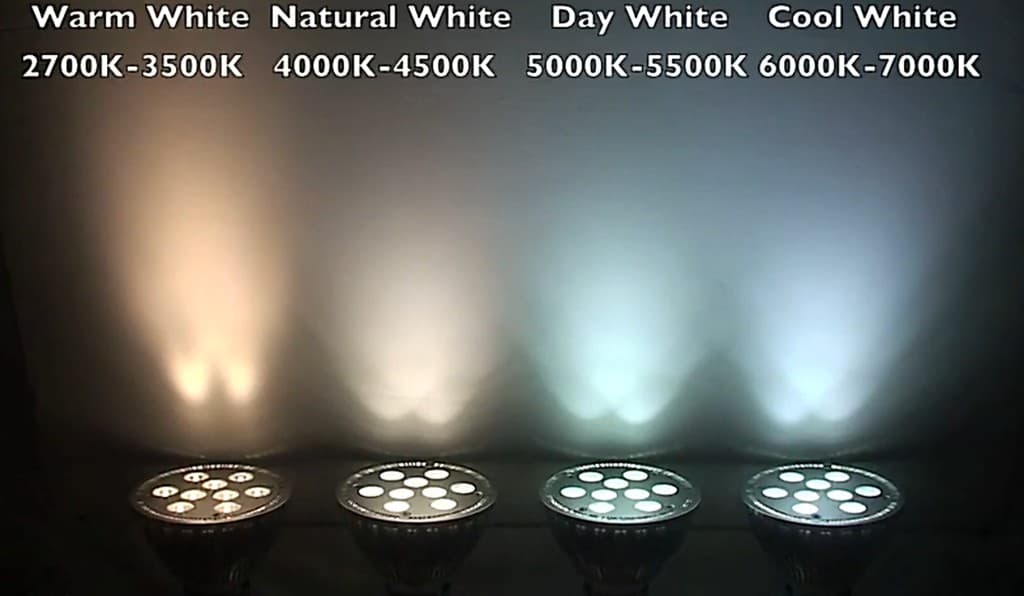
LED lights are an energy-saving and efficient light source that come in an array of colors to liven up any environment. Because LED lights are such a new technology, though, some people have questions about how the intensity or color temperature of LED lights compare to their incandescent counterparts.
What is Color Temperature?
LED Color temperature tells you the amount of pure white and other colors present in an LED light source. Although color temperature can range from roughly 1500 kelvin to 8000 kelvin, for most intents and purposes the range is 2000 to 6000 kelvin.
The light being emitted from a candle, for instance, is just under 2000 kelvin whereas the indoor light you’re used to seeing every day is probably closer to 4000 kelvin.
The color temperature of most LED lights is thought to be around 4600 kelvin, which is bright enough to give you a full palette of coloration.
The eye perceives the color temperature of LED lights as natural white. Color temperatures less than 4600 kelvin, or the color temperature of most LED lights, is the warm white color temperature of an incandescent light bulb.
Compared to LED lighting, the warm white of an incandescent is further away from daylight white. An example of daylight white, which is simply another color temperature, would be noon sunlight.
Ideal Color Temperature
Considering the fact that LED lights guarantee longer lifespans and more realistic color temperatures than incandescents, it’s important to pick the right color temperature for your next batch of LED lights.
If you’re considering purchasing LED lights for a reading room or study, then you might want to consider buying a more powerful LED light with a higher color temperature.
A color temperature of around 5500 kelvin is considered ideal for environments in which a lot of reading and writing goes on.
Picking LED Color Temperature
A big part of the color temperature you end up going with will be determined by the surrounding environment and what you have going on in the background.
For instance, an environment with a lot of reds and oranges leaning towards the lower end of the color temperature spectrum might benefit from an LED of a softer color temperature.
In an environment that’s dominated by brighter colors and blues, you might want to go with an LED skewed towards the higher end of the color temperature spectrum. This might mean going with an LED beyond the 4600 kelvin average for LED lighting.
Although the color temperature that you go with is entirely up to you, certain environments will dictate certain choices. Restaurants or kitchens normally benefit from softer LED lighting, for example.
So, although a color temperature of approximately 3000 kelvin would be ideal for a kitchen space, you might need a color temperature closer to 5000 kelvin for a study or living room.
A warmer color temperature that embraces the lower end of the color temperature spectrum gives off a more relaxed mood. Therefore, a warmer color temperature would be ideal for most dens and bedrooms.
For most applications, LED lights with a very cool color temperature of around 6500 kelvin would be too intense and off-putting as bedroom lighting.
Ultimately, selecting LED lighting and different color temperatures boils down to preference. It’s your choice whether to put warmer color temperatures in certain rooms or heighten the contrast by placing LED lights of a cool color temperature in an environment with a lot of red and orange colors (i.e., warmer color temperatures). Have fun with the process!